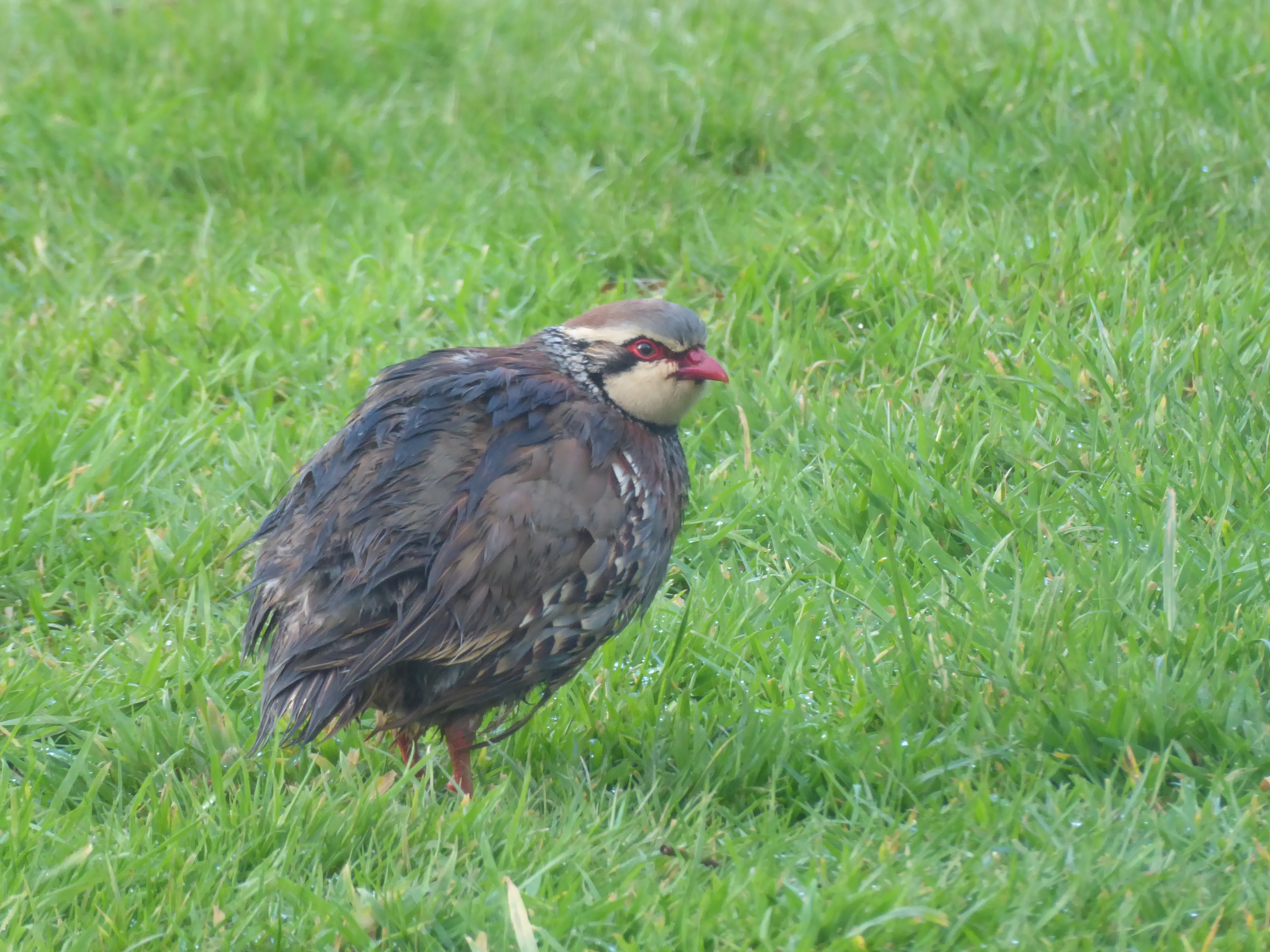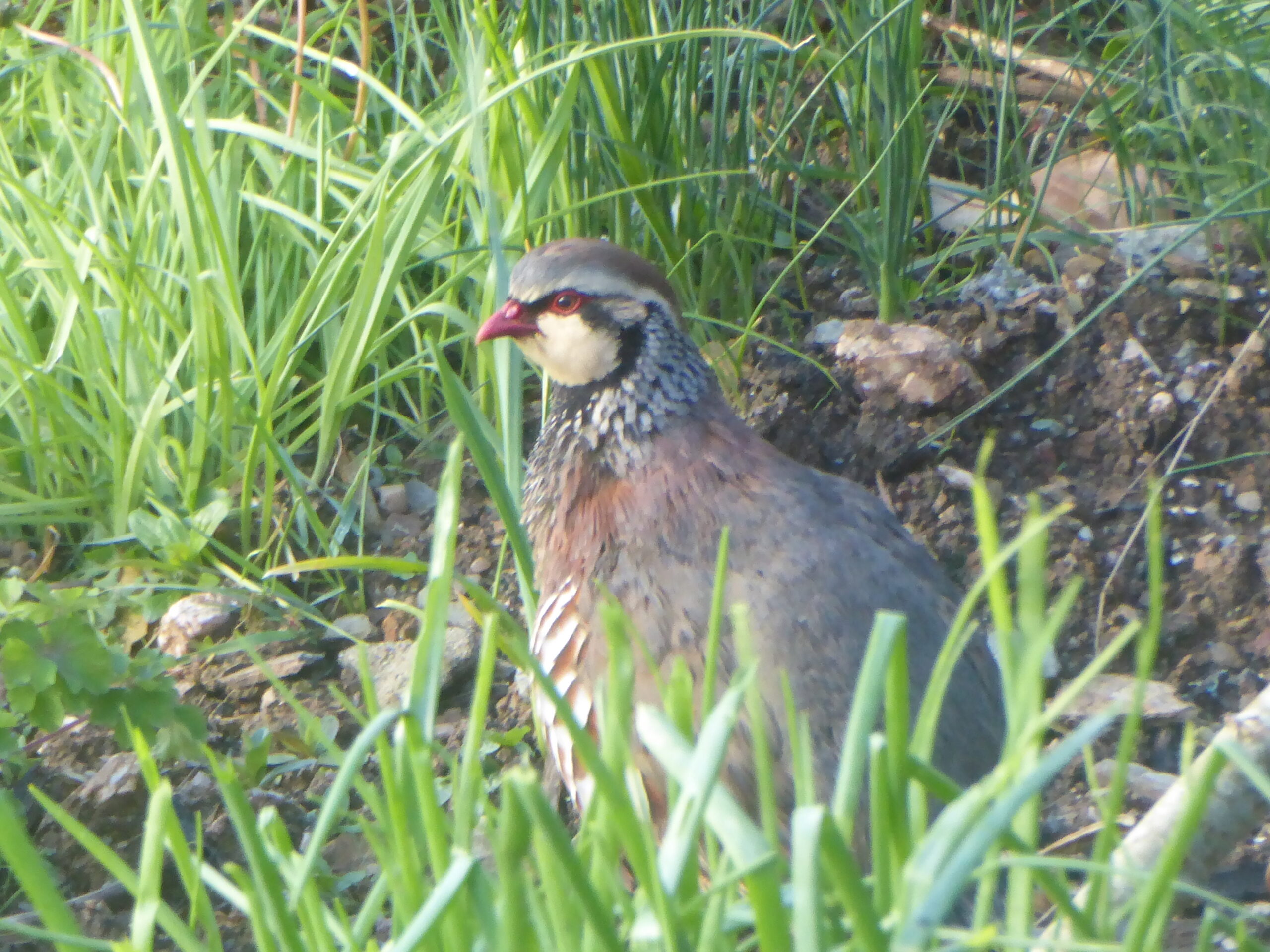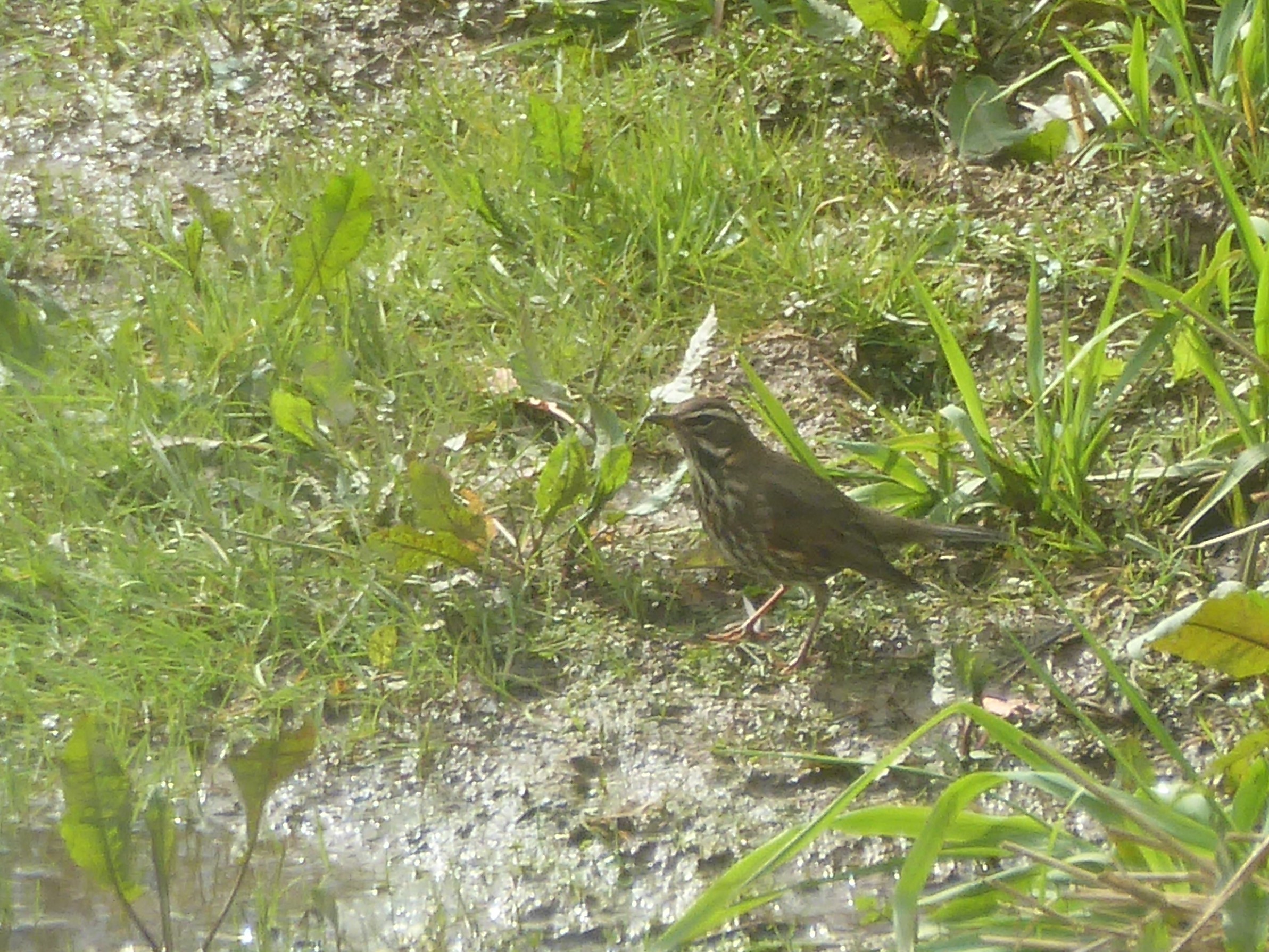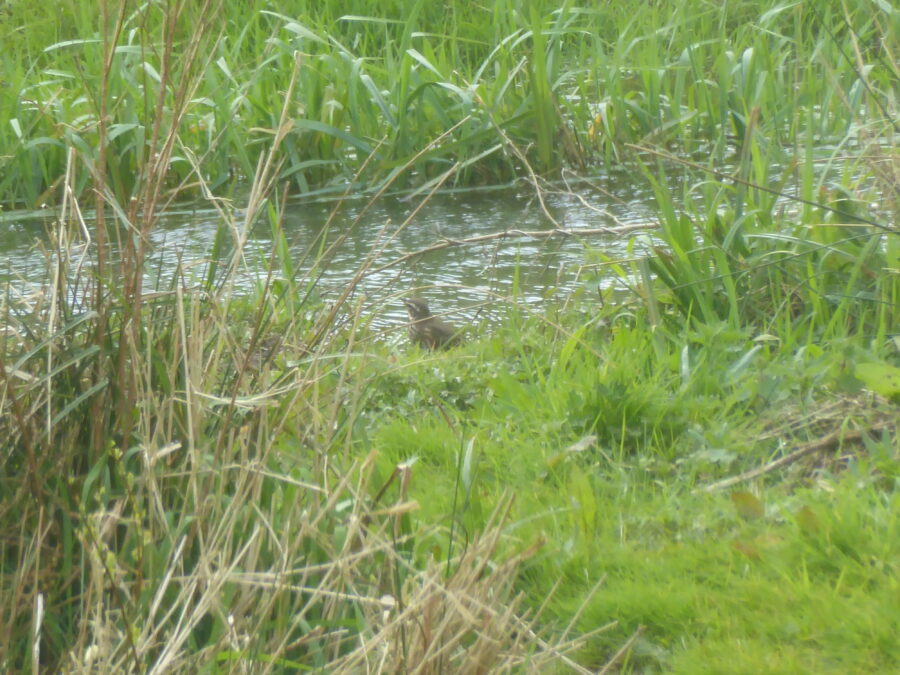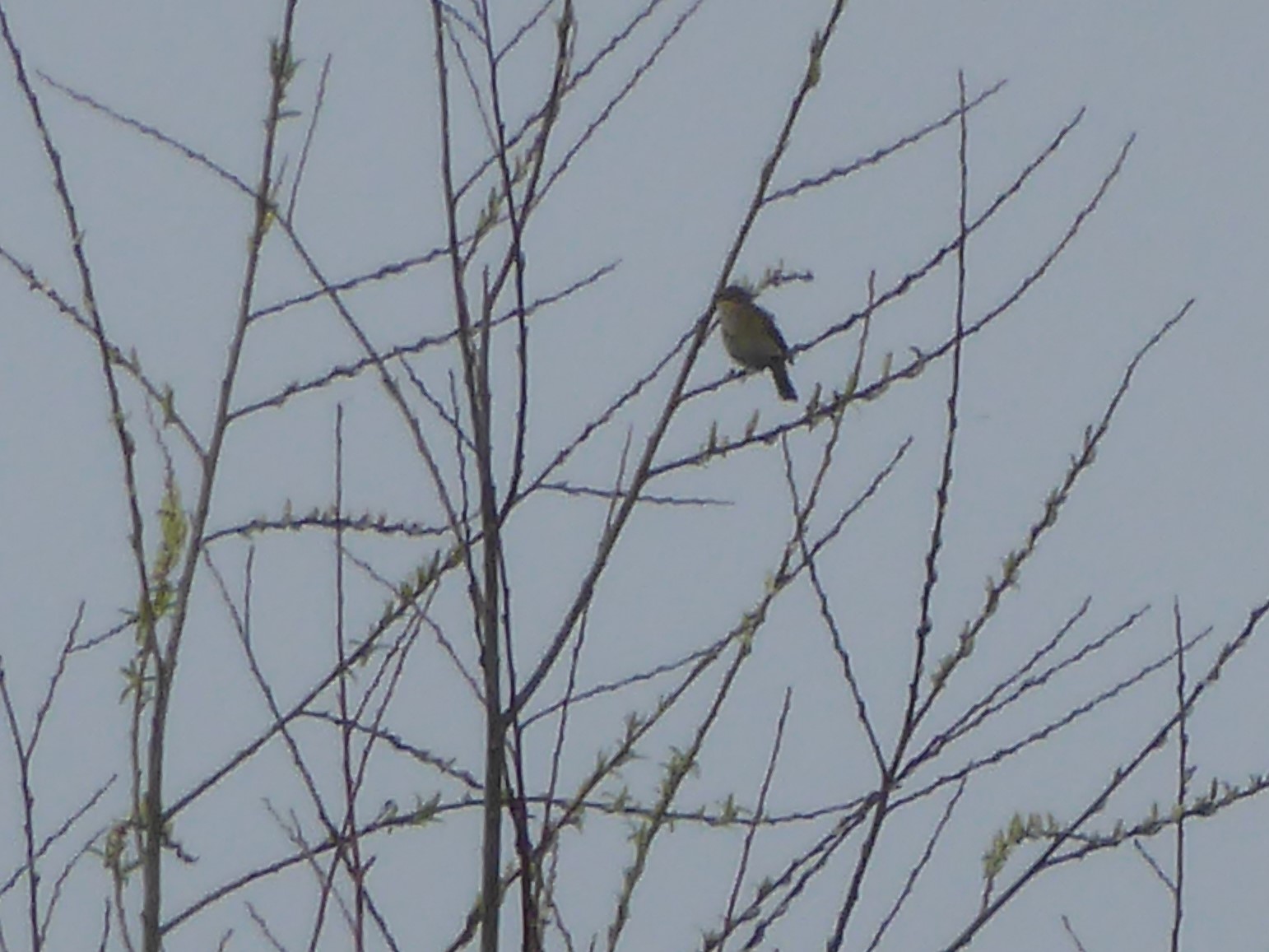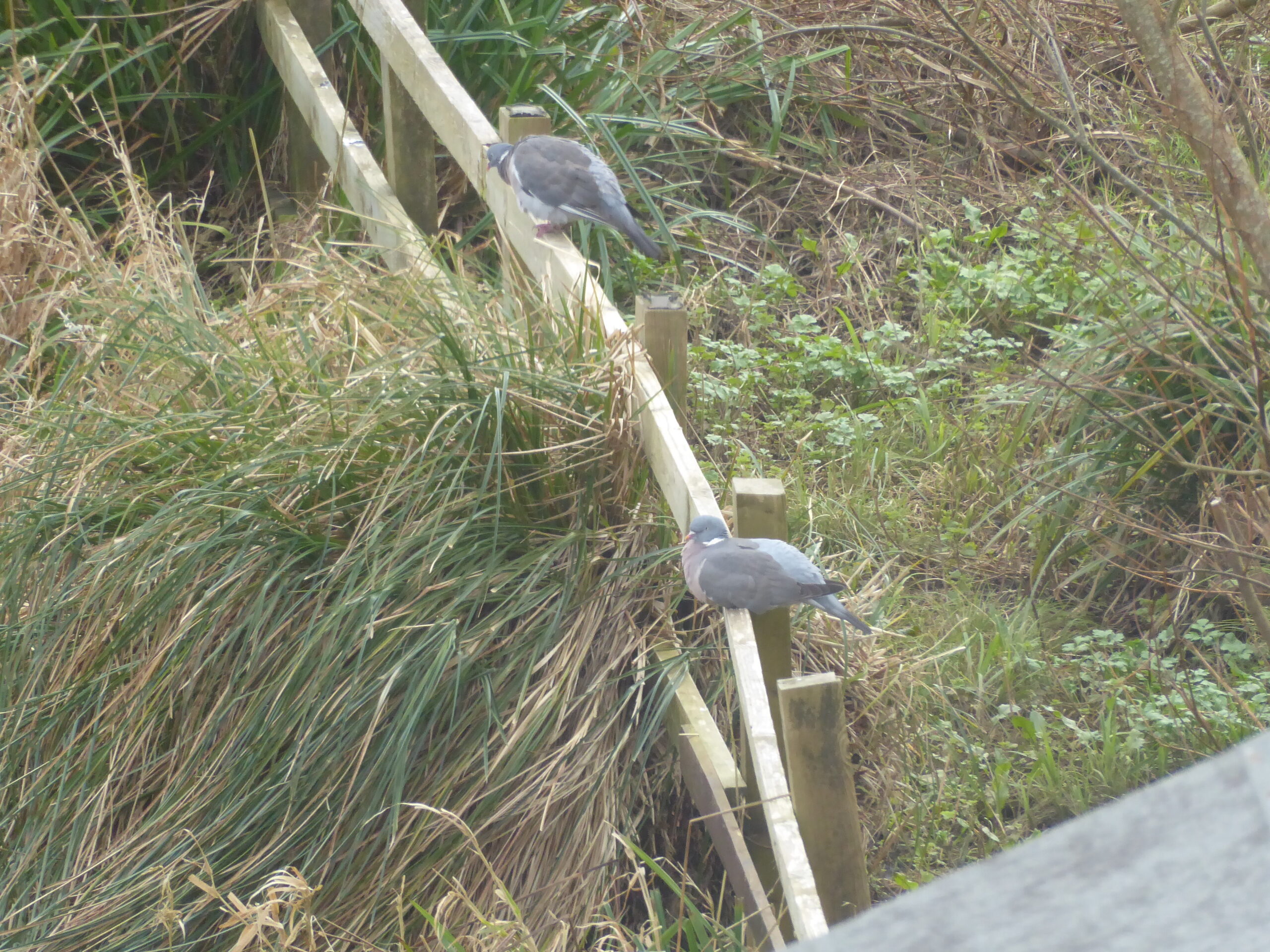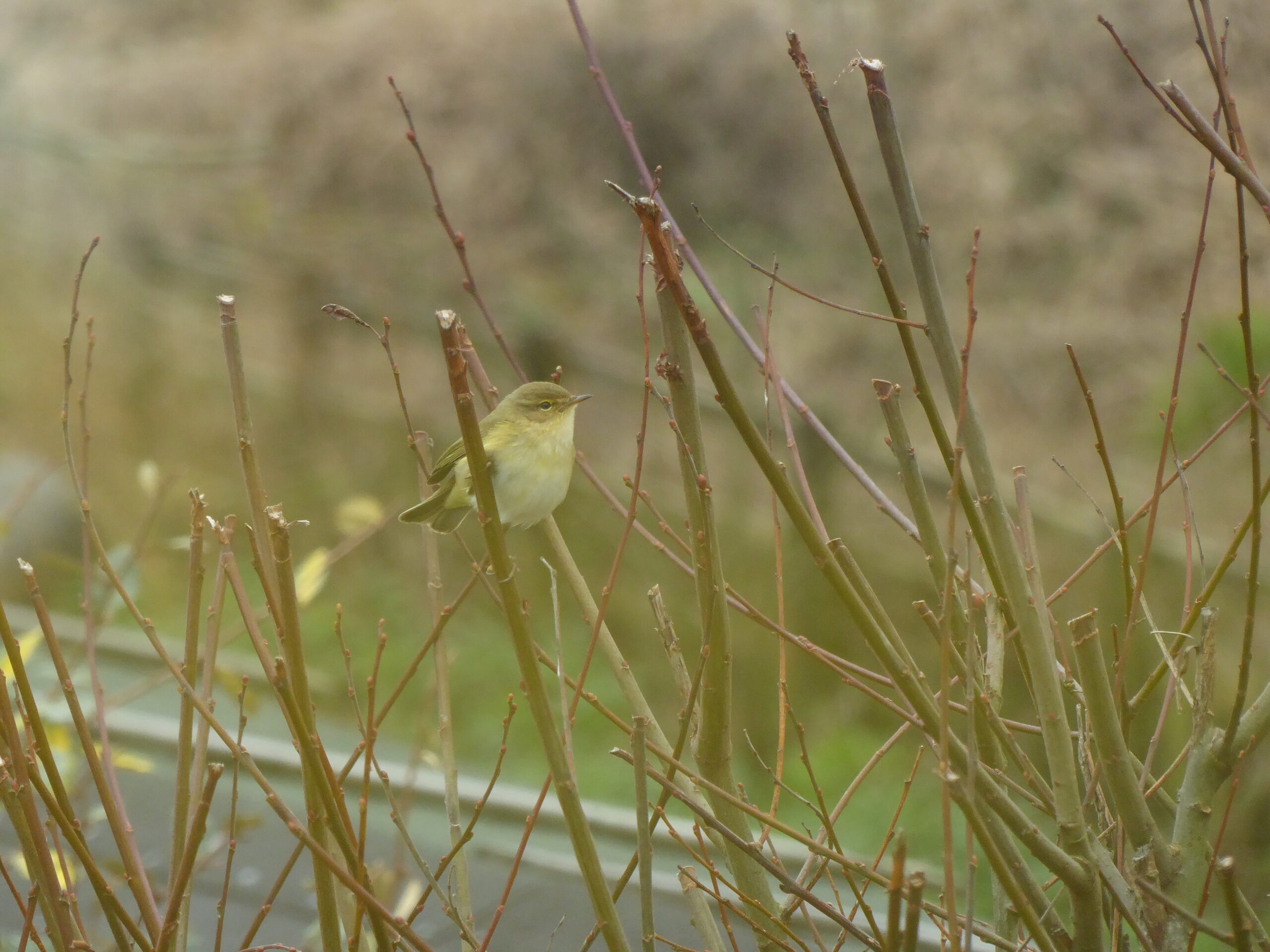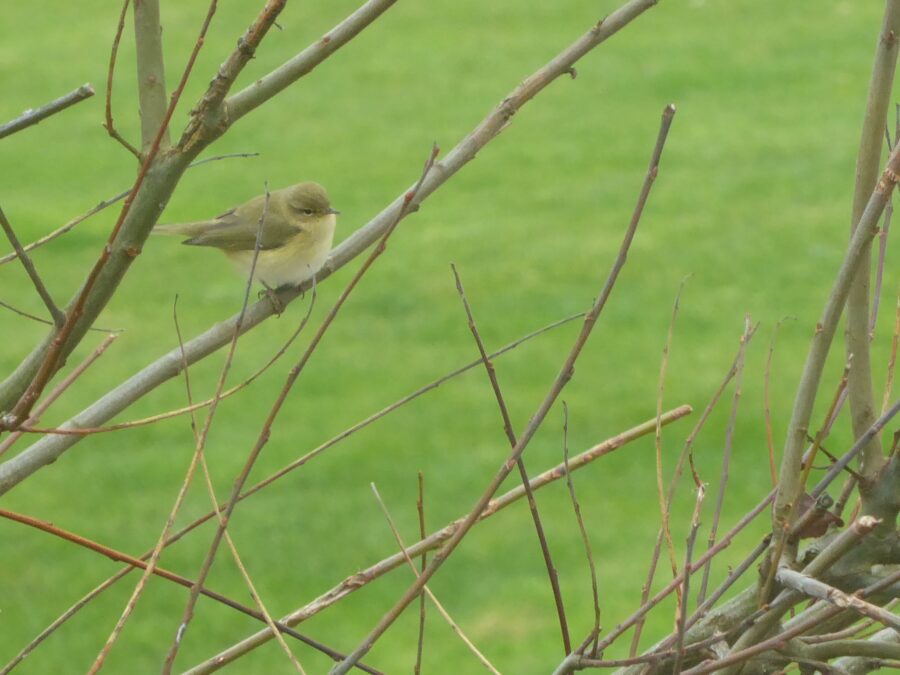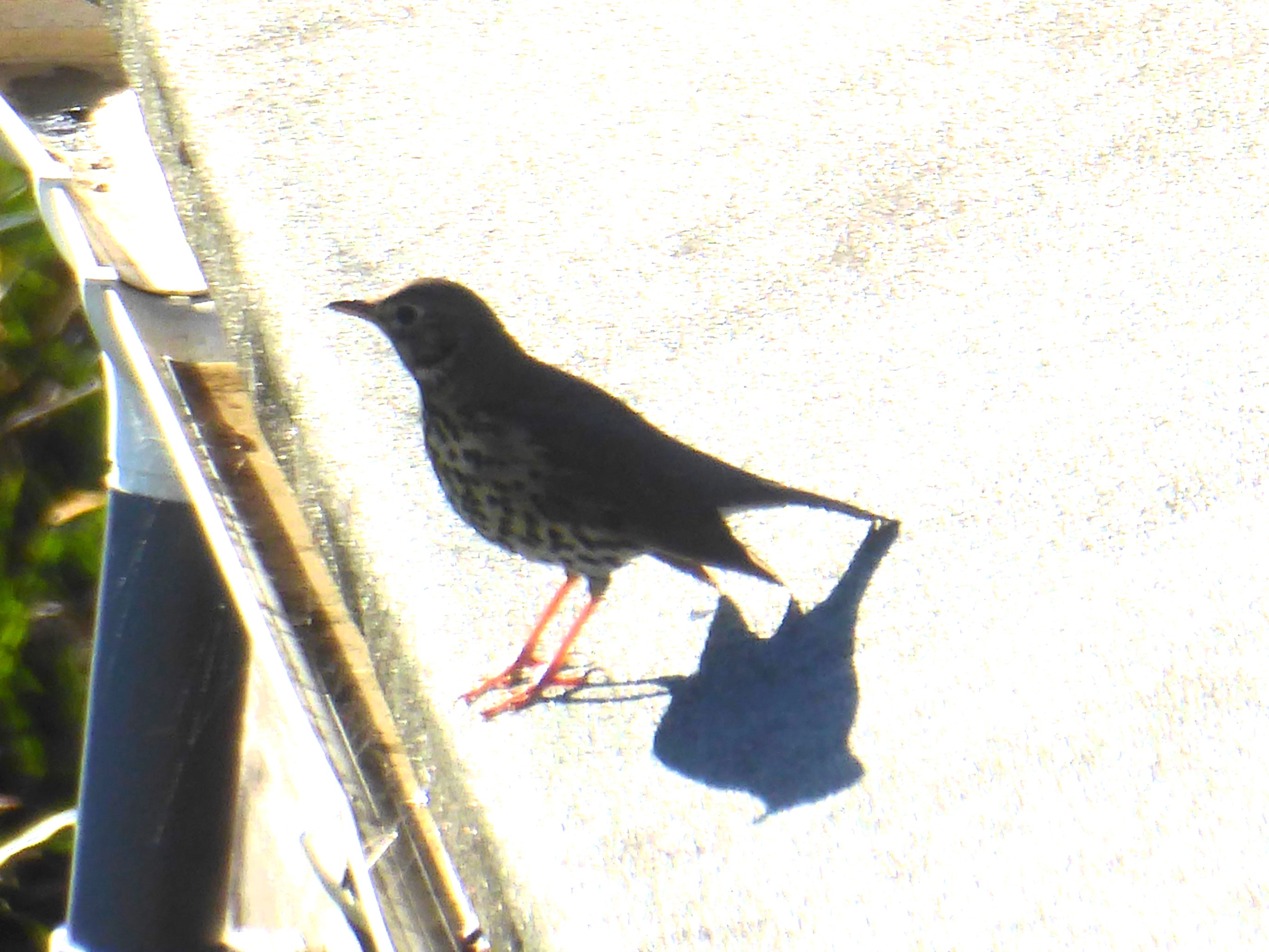So, not a sighting today, but more of a summary. As usual when we do the Big Garden Birdwatch, the birds were mostly taking the day off. We scored a total of 20 birds in an hour. We thought that was a rubbish score, really, given the number of birds that we commonly spot during the day. The rules of this Birdwatch are that you count the highest number that you see at any one time (in case you count the same bird twice) and you don’t count birds flying over the garden, which today included five woodpigeons, a kestrel, a heron, two carrion crows and a jay.
The birds that landed in our garden (top garden and watermeadow combined) were:
Wood Pigeon x 1 – sitting on the fence in the watermeadow.
Dunnock x 2 – hopping around under the bird feeder and shrubs.
Little Egrets x 2 – having been fended off next door’s lake by the mallards and moorhens, they flew over the fence to pause and reconsider their plans briefly before carrying on up the valley. It’s been a joy to see this pair every day for the last week or so and we hope they are going to choose to nest in the valley.
Robin x 1 – there were two of them yesterday having a bundle on our patio, possibly rivals, as they are known to be fiercely territorial.
Sparrowhawk x 1 – this was a stroke of luck! The sparrowhawk came to perch on our fence for a while. The kestrel was flying around, but not stopping.
Wren x 1 – over the other side of the garden under the shrubs.
Blackbird x 1 – over by the fruit cage.
House Sparrows x 6, Blue Tits x 2, Great Tits x 3 – these were flying between the bird feeder, surrounding trees and the willows and sea buckthorn in the watermeadow.
N.B. The rules of ‘A Year in the Valley’, my rules, include birds flying over the watermeadow, as they are taking advantage of the valley’s natural corridor, which includes our patch – and it’s not a count of population, but of diversity of species.
